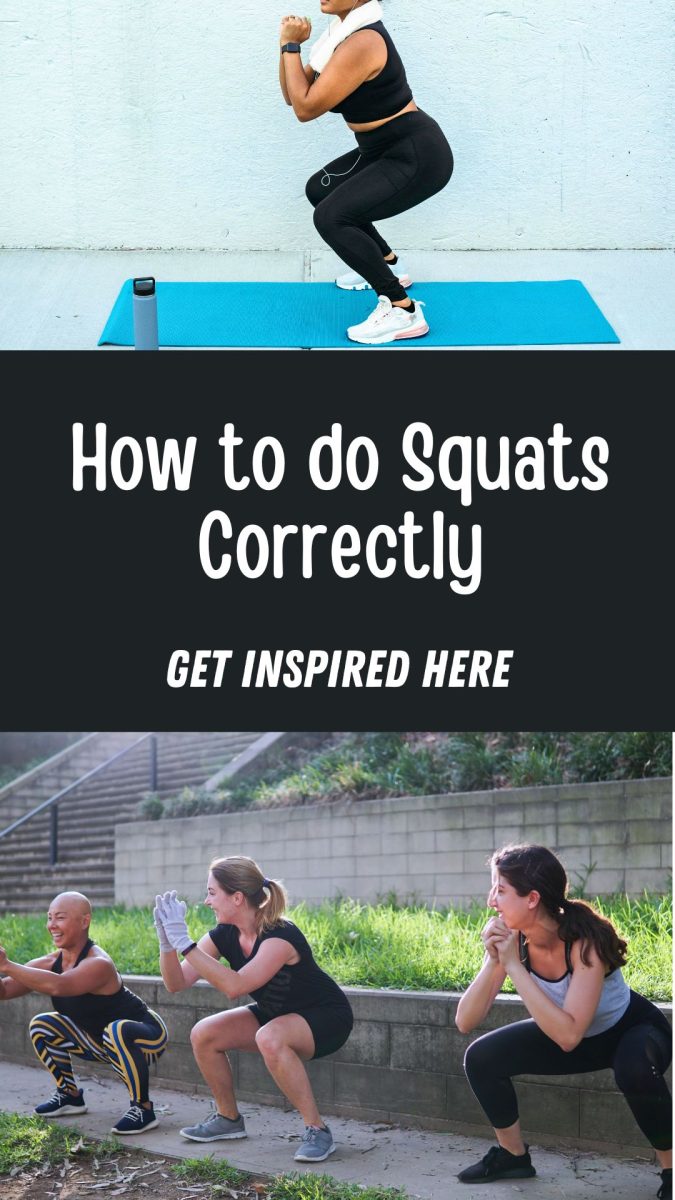Squats are one of the most effective and fundamental exercises in any fitness routine. Learning how to do squats correctly is critical to prevent injury and ensure results.

Why Squats Are Essential
Squats strengthen the lower body, improve core stability, enhance mobility, and build functional strength that helps with daily movements like standing, walking, and lifting. Squats work multiple muscle groups at once, making them ideal for building muscle, burning calories, and improving overall fitness. They are even good exercises for pregnant women.
Squats primarily target the quadriceps, hamstrings, and gluteus muscles. They also engage the calves, lower back, and core muscles, making them a compound movement. The glutes are especially activated when you push up from the squat position, and the core helps stabilize your body throughout the motion. When performed with weights, such as a barbell or dumbbells, squats also challenge the upper back and shoulders to maintain posture.
Basic Bodyweight Squat Form
To do a basic bodyweight squat, start by standing with your feet about shoulder-width apart. Point your toes slightly outward, no more than 10 to 15 degrees. Keep your chest up, shoulders back, and core engaged. Begin the movement by bending your knees and hips at the same time, like you’re sitting back into a chair. Lower your body until your thighs are parallel to the ground, or as low as you can go without compromising form. Keep your knees aligned with your toes and avoid letting them cave inward. Press through your heels to stand back up to the starting position.
Maintaining proper form is essential. Always keep your chest lifted and avoid rounding your back. Engage your core throughout the entire movement to protect your spine. Make sure your knees track in line with your toes—not too far forward or inward. Your heels should stay flat on the ground; if they lift, it could indicate tight calves or poor ankle mobility. Don’t rush through squats—move with control on both the way down and up. Breathe in as you lower and exhale as you rise.
Common Squat Mistakes to Avoid
One of the most common mistakes in squats is allowing the knees to collapse inward. This can put stress on the joints and lead to injury. Another mistake is rounding the back or letting the chest drop, which can strain the spine. Avoid leaning too far forward or lifting your heels off the ground. Squatting too shallow, or not going low enough, limits your range of motion and reduces the effectiveness of the exercise. Finally, don’t rush. Fast, sloppy reps reduce results and increase the risk of injury.
Modifications for Beginners
If you’re new to squats, start with a chair squat. Stand in front of a chair with your feet shoulder-width apart. Slowly sit back until you touch the chair, then stand up again. This helps you learn the motion and builds confidence with proper form. You can also use a wall for support or hold onto a sturdy object as you practice. As you build strength and balance, progress to deeper squats and eventually add resistance.
Basic Beginner Exercises
For more basic exercises and how to do them with good form, check these out:
- Push-Ups for Obese Women
- Planking Exercises for Beginners
- How to Do Glute Kick Backs
- The Ultimate Guide to Bicep Curls for Muscle Growth
- The Ultimate Guide to Tricep Extensions for Stronger Arms
- How to Deadlift for Beginners
- Bodyweight Lunges for Beginners

Advanced Squat Variations
Once you’ve mastered the bodyweight squat, you can add resistance to increase the challenge. Goblet squats involve holding a dumbbell or kettlebell at your chest. Barbell back squats require a barbell resting across your shoulders and are common in strength training. Front squats involve holding the bar in front of your shoulders and emphasize the quads. Other variations include sumo squats (feet wider, toes pointed out), jump squats (explosive movement), and single-leg squats (pistol squats), all of which work different muscle groups and improve balance.
Foot placement plays a key role in squat performance. Your feet should be flat, with even weight distributed between your heel and midfoot. Toes can point slightly outward, but not excessively. Your knees should track in the same direction as your toes, which helps protect the joints. Don’t let your knees extend far beyond your toes during the movement—this puts extra stress on the knee joint. If you have trouble maintaining this alignment, work on mobility in your hips and ankles.
Proper squatting requires good mobility in the ankles, hips, and thoracic spine. If you struggle to get low in your squat or your heels lift off the ground, limited ankle mobility might be the issue. Stretching your calves and hip flexors can help improve depth and form. Foam rolling your lower body and warming up before squats can also increase range of motion and reduce the chance of injury. Working on flexibility alongside strength training ensures better long-term performance.
How Often to Do Squats
Squats can be done two to three times per week, depending on your goals and workout routine. For strength, do fewer reps with heavier resistance. For endurance and toning, do more reps with lighter resistance or bodyweight. Allow rest between squat sessions to give your muscles time to recover and grow. You can incorporate squats into full-body workouts, leg days, or even short daily movement routines to build strength over time.
Squats are one of the best exercises for building lower-body strength, improving posture, and boosting overall fitness. Whether you’re a beginner or an experienced athlete, mastering squat form is essential. Focus on proper technique, listen to your body, and gradually build strength with consistency. With the right approach, squats will help you move better, feel stronger, and support a healthy, active life.





No comments! Be the first commenter?